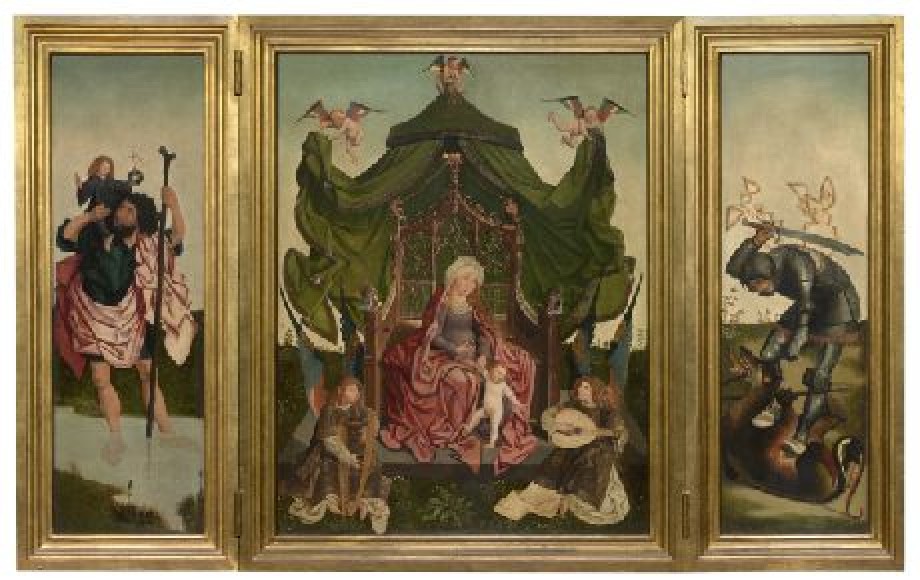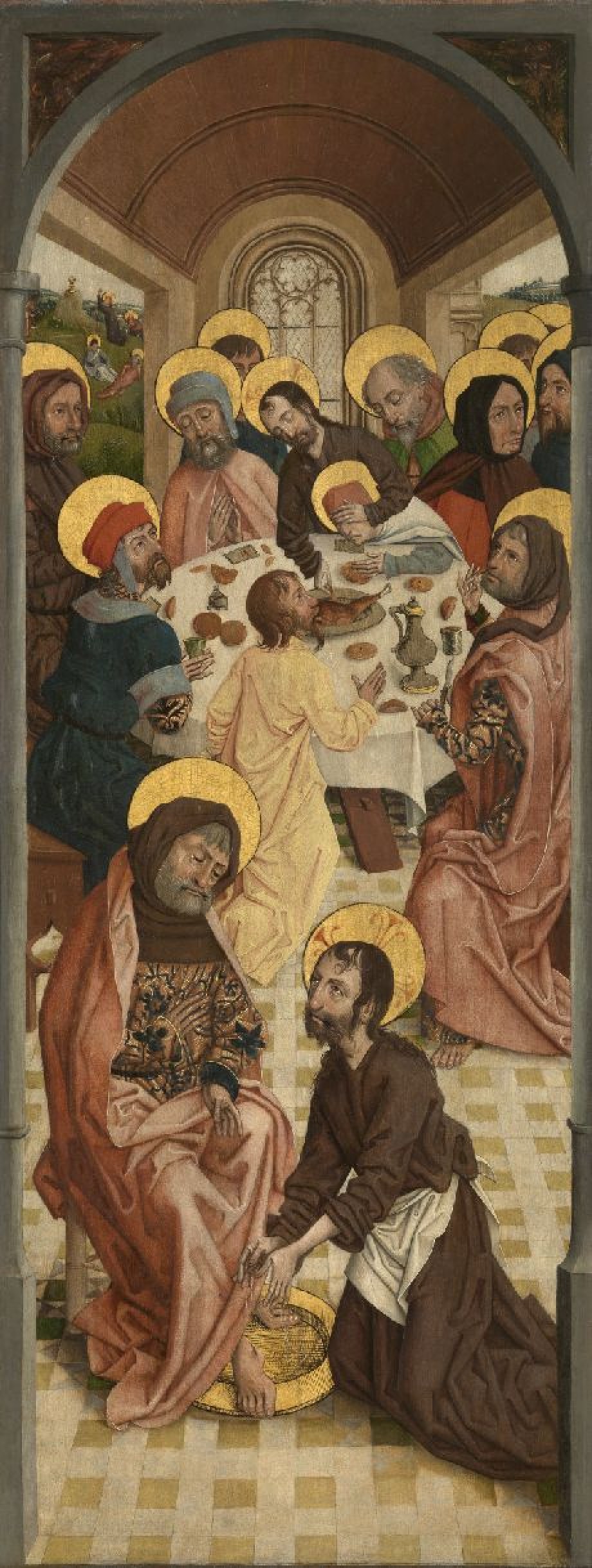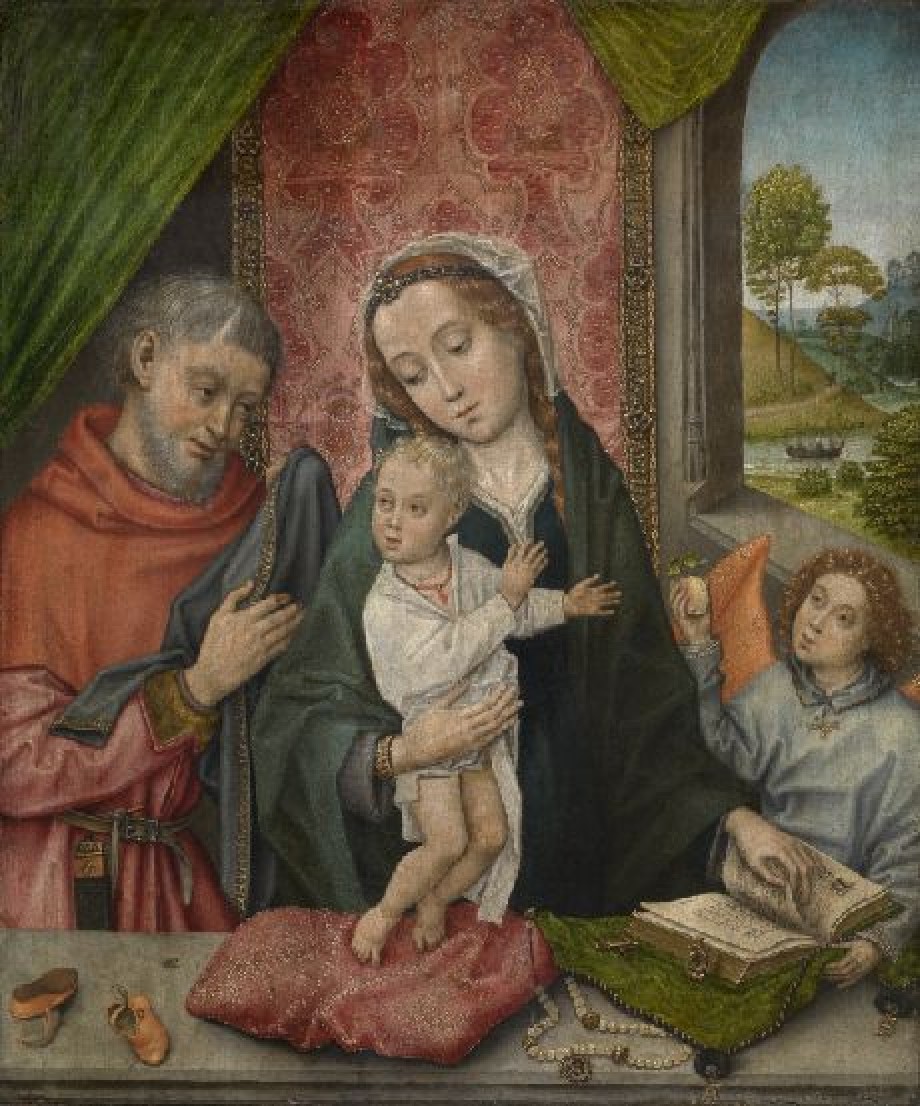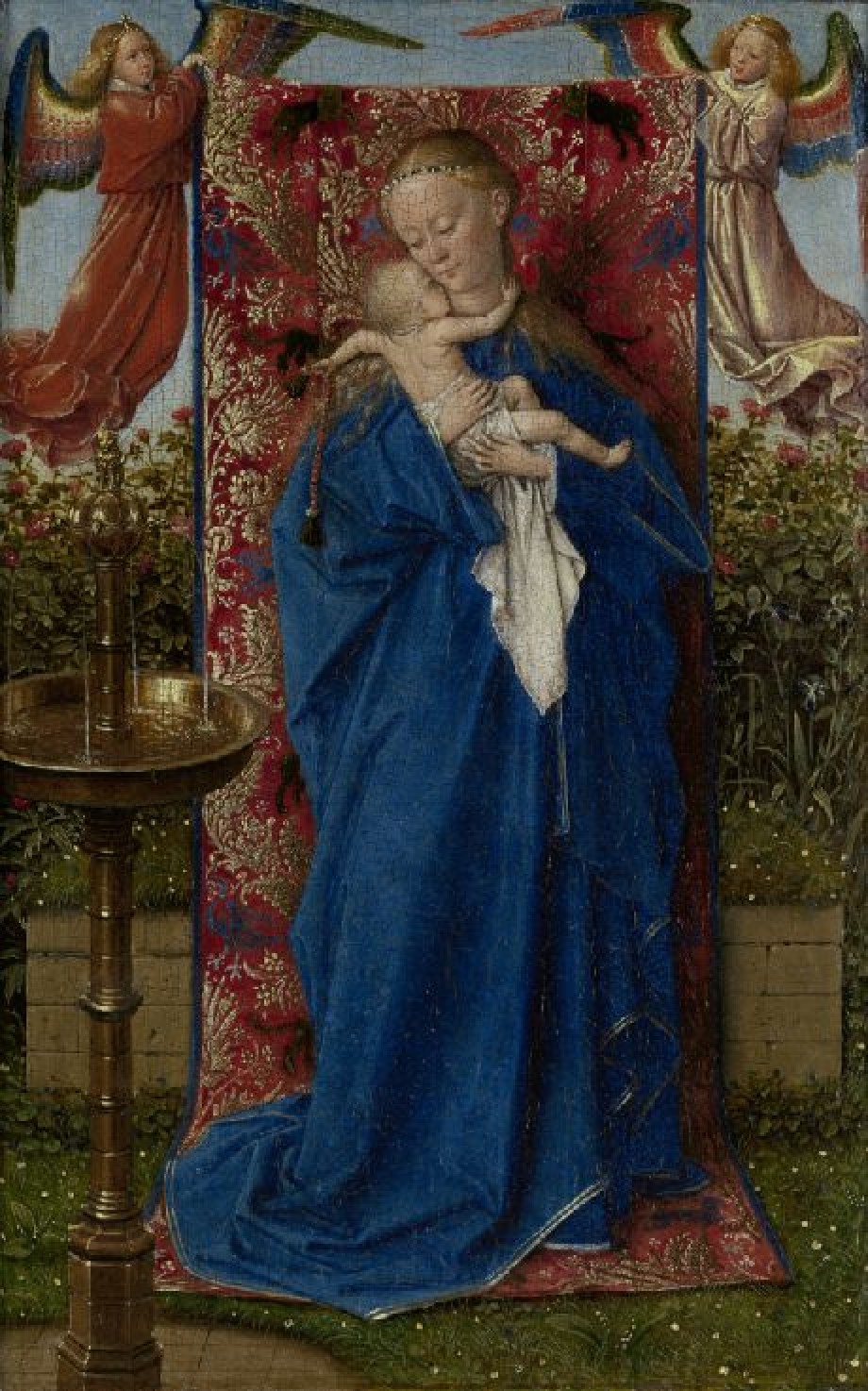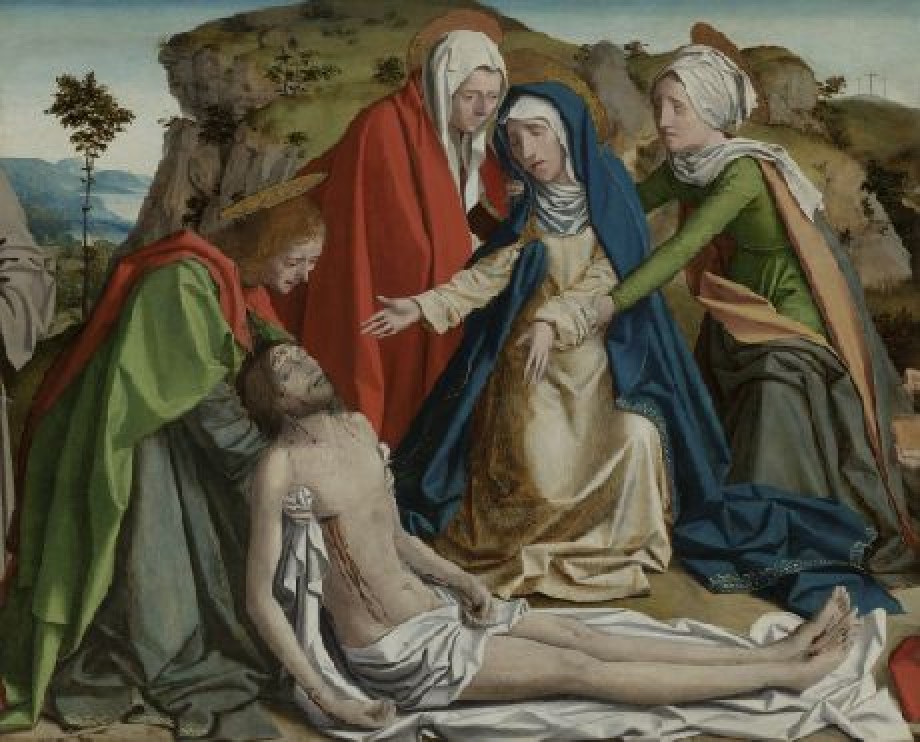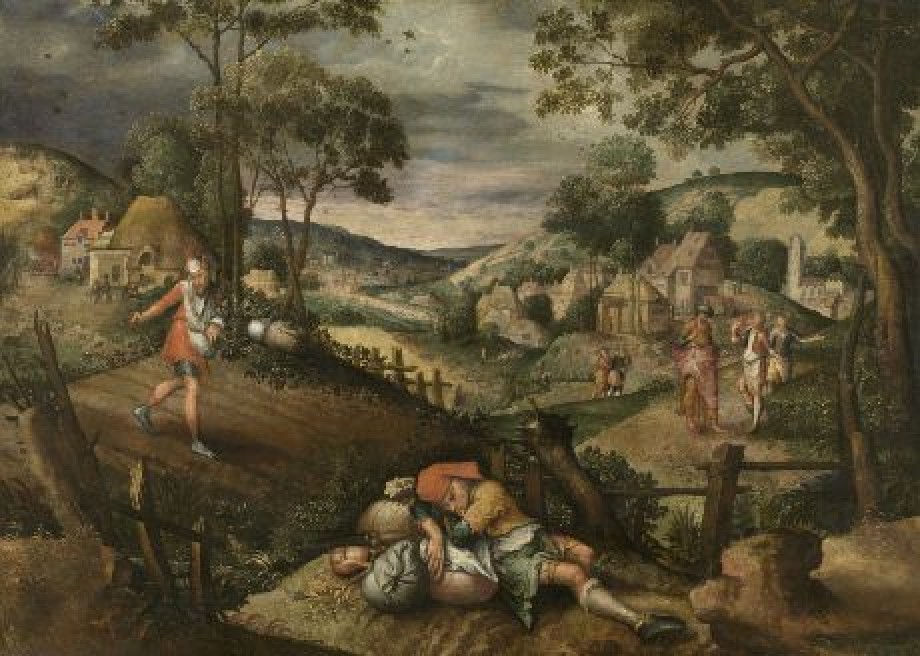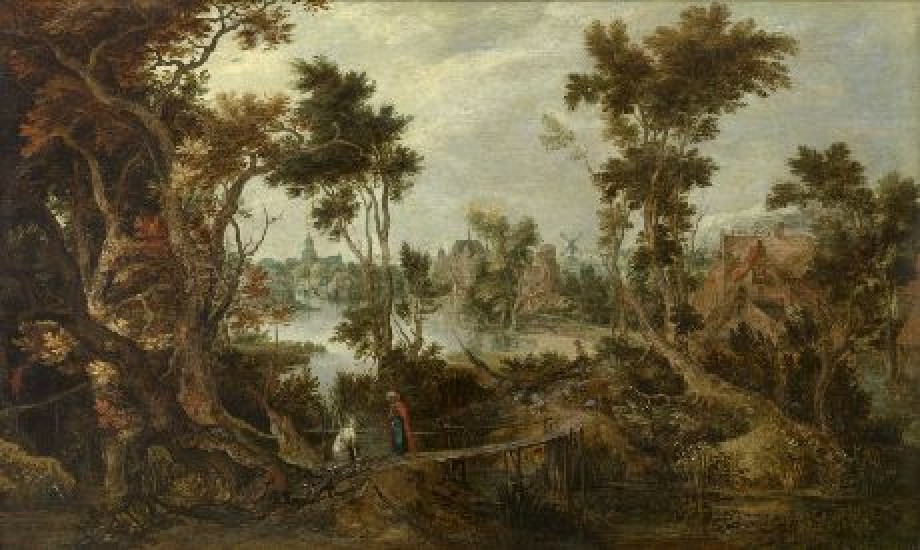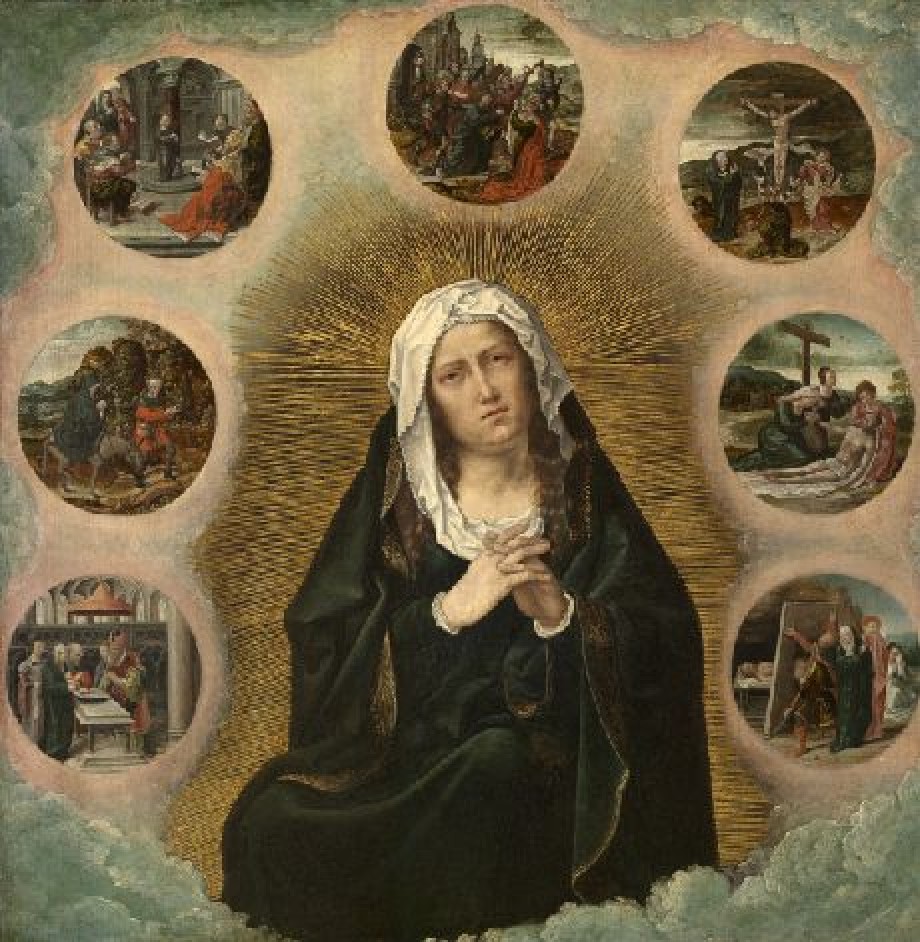Saint Barbara

Artist / maker
Jan van Eyck (painter)Date
1437Period
15th centuryCollection
Royal Museum of Fine Arts Antwerp
Unfinished tower, finished work? This incredibly detailed little panel measures just thirty-two centimetres by eighteen. Its maker’s name and the year of execution are stated in Latin on the surviving original frame with its painted imitation marble: ‘Jan van Eyck made me. 1437’. There is some discussion as to precisely what is meant here by ‘made’. Whatever the case, the…
Read more
Unfinished tower, finished work?
This incredibly detailed little panel measures just thirty-two centimetres by eighteen. Its maker’s name and the year of execution are stated in Latin on the surviving original frame with its painted imitation marble: ‘Jan van Eyck made me. 1437’. There is some discussion as to precisely what is meant here by ‘made’. Whatever the case, the only colour is found in the expanses of ochre and blue in the background, possibly added by a later hand. Some believe that the panel is unfinished: Van Eyck would ordinarily have completed the work with layers of oil paint but abandoned the work for reasons unknown. Others argue that it is a grisaille – a monochrome painting – and hence that it was completed. This is suggested by the fact that the frame has been signed, although the frame itself is not finished: the imitation marble in the upper left has not been fully worked out.
St Barbara is seated in the foreground, her robe spread widely over the ground. She is leafing through a prayer book and holding a palm branch, a reference to her martyrdom. According to her legend, the beautiful Barbara was locked away in a tower by her anti-Christian father to stop her meeting anyone.
He made just one mistake: there was a bathhouse near the tower, which Barbara visited when he was travelling abroad. She noticed that the tower only had two windows and ordered a third one to be added, an allusion to the Holy Trinity of God the Father, Christ the Son and the Holy Spirit. Barbara had converted to Christianity and baptised herself in the bathhouse. When her father returned and discovered what she had done, he had her beheaded.
Van Eyck opted here for a tower that is still under construction, and which resembles that of a church, more specifically the tower of Cologne Cathedral. Stones are being carried in, cut, hoisted and laid using trowels, carts and a crane.
Read less
